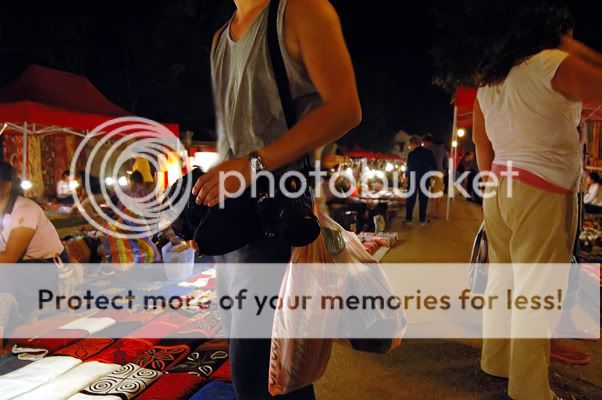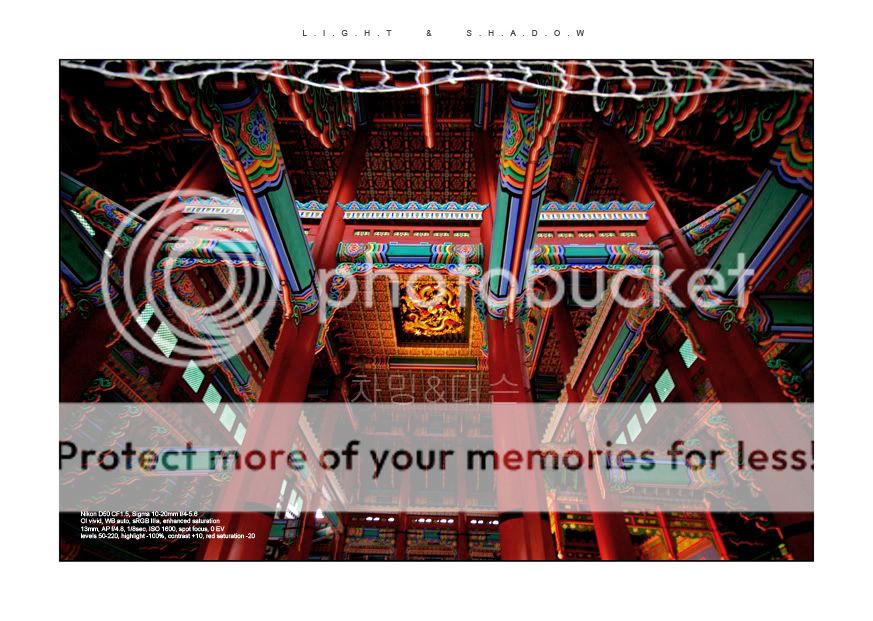Any travel tips to share would be greatly welcomed.
Summary
1. travel projections to get partners
2. links to discussion about destinations revolving around travel photography
3. topics about travel photography: etc general planning, equipments, handling of weather.
Simply pop in your projection (of cos it is not a committment, just a projection, as i understand many need to see if their leave can be approved or not)
1. your projected destination (country, area, city) of travel,
2. which month? when? the duration you prefer or can afford to spend
3. no of people in the group prefered.
4. the link to the thread that you have further discussion about. or any other things you would like to add, e.g. contact, preferences
Kindly do the same way i do below (after that one liner, you can leave additional/further details in your post) then i will do some simple cut and paste as below.
Summary of travel projections
2006 Dec
Szechuan - ling nightsky, early dec, 10 days, 2 more to go, thread
HK & China - XC Pictorial, Dec 7-15, 9 days, Hong Kong, GuangZhou, ShenZhen
Japan - ReiszRie, Dec 15-27, 12 days, Kansai region and Kinki Region with a day trip or 2 to Karuizawa and Hakone
Cambodia - USM, Dec 8-12, 5 days, Siem Reap (Angkor Wat), thread
Cambodia - pauche, Dec 23-Jan 7, Siem Reap - Phnom Penh - Sihanoukville, dun mind bike mates. thread: look below
2007 Jan
Cambodia - kitkat, 4-5 days, Angkor Wat, looking for tickets.
India, Northern - binbeto, Jan 13-21, New Delhi, Agra, Allahbad and Varanasi, thread
China, Northern - peapilot, late jan to late jun duration unknown, around beijing
2007 Feb
The Philippines - zoossh, 1 week before and during chinese new year, maybe 10 days, prefer 4 in a group, planning
2007 Mar
Yunnan - luosangjian, mar 11-20, 10 days, thread
2007 May
Szechuan - djinn, thread
2007 Sep
Ugyur (Xinjiang) - luosangjian, end sep, thread
Summary of discussion of photographic travel destination
South Asia & Himalayan region
India, Delhi 2006 Nov
India, Rajasthan 2006 Oct
Tibet 2006 Nov
East Asia
Japan 2006 Nov
Southeast Asia
Laos 2006 Oct
Travel photography issues: basic planning
1. What resources can I get to start a backpacking trip?
Basically, it depends on your style of travel. Usually it takes one to have a few trips to start to get a feel of what backpacking is about and how it should be conducted. It can be done alone or in small groups or in bigger groups and experience can be pleasant or "enriching" depending on where you go, when you go and who you go with. To make your trip more complete and memorable, it is actually better to have a rough idea of what you want, especially in a photographic trip, so a little planning would be good.
What one needs is
1. general ideas & descriptions
2. details
3. pictures
4. advices
First of all, get an idea of what is the highlights of the place you are going to and its climate. This will set a mapwork of your entire plan. Have an idea of the space and time to see if you can fit so many places in that many days.
Next you will need exact details such as the distance between different locations, routes or even opening hours for locations in the cities. I find that the best resources is to get the latest edition (preferably within 2 years of last print) of lonely planet. They have little pictures but give a pragmatic system that is more complete than other travel books. Nobody in any forums is going to be a walking travel dictionary to remember all the details of his previous trip, unless he just came back recently, and nobody is going to hunt down online that specific questions of your trip that you can't find online, that he is not going for. That is why open ended questions in most travel forums are often left unanswered. So the most reliable source is from the books supplemented by information available online. But do note that things changes, and nobody can guarantee the accuracy of the information. Nuts have set up an excellent site for this, http://www.wookup.com/. Although traffic is low and thus not really updating, it is an invaluable resource that takes a lot of effort to organise.
Pictures would be good to just browse through. It will help to entice you to travel to specific locations in an area that you are more likely to be interested.
After homework are done, now it is good time to join in the forums to get more advices, of which a post in some local high traffic forums may be useful.
2. Quick links to flight schedule & ticketing
Singapore, Tiger Airways schedule, booking
Singapore, Jetstar Asia schedule & booking
Singapore, Singapore Airlines schedule & booking
Singapore, Silk Air booking
Thailand, Thai Airways schedule & booking
Taiwan, China Airlines schedule & booking
Taiwan, Eva Airlines schedule & booking
Taiwan, Far Eastern (Yuan Dong) Air Transport (domestic) schedule & booking
Taiwan, Mandarin (Hua Xin) Airlines (domestic) booking (in chinese)
Taiwan, Transasia (Fu Xing) Airlines (domestic) booking (in chinese)
Taiwan, Uni (Li Rong) Air (domestic) booking (in chinese)
HK, Cathay Pacific (founded by US-AU, now under UK) schedule & booking
China, Air China schedule & booking (US site)
India, Jet Airways schedule, booking
India, Air Sahara schedule & booking
India, Air India schedule & booking
http://www.zuji.com.sg/web/content/sg/index.html
http://www.airfares.com.sg/flights/2_latest_airlines.htm
3. Quick links to maps
this part is endless, so i just add on when i see links that is useful
India maps of India
4. Other useful links
Wikipedia domestic AC power sockets/plugs
Summary
1. travel projections to get partners
2. links to discussion about destinations revolving around travel photography
3. topics about travel photography: etc general planning, equipments, handling of weather.
Simply pop in your projection (of cos it is not a committment, just a projection, as i understand many need to see if their leave can be approved or not)
1. your projected destination (country, area, city) of travel,
2. which month? when? the duration you prefer or can afford to spend
3. no of people in the group prefered.
4. the link to the thread that you have further discussion about. or any other things you would like to add, e.g. contact, preferences
Kindly do the same way i do below (after that one liner, you can leave additional/further details in your post) then i will do some simple cut and paste as below.
Summary of travel projections
2006 Dec
Szechuan - ling nightsky, early dec, 10 days, 2 more to go, thread
HK & China - XC Pictorial, Dec 7-15, 9 days, Hong Kong, GuangZhou, ShenZhen
Japan - ReiszRie, Dec 15-27, 12 days, Kansai region and Kinki Region with a day trip or 2 to Karuizawa and Hakone
Cambodia - USM, Dec 8-12, 5 days, Siem Reap (Angkor Wat), thread
Cambodia - pauche, Dec 23-Jan 7, Siem Reap - Phnom Penh - Sihanoukville, dun mind bike mates. thread: look below
2007 Jan
Cambodia - kitkat, 4-5 days, Angkor Wat, looking for tickets.
India, Northern - binbeto, Jan 13-21, New Delhi, Agra, Allahbad and Varanasi, thread
China, Northern - peapilot, late jan to late jun duration unknown, around beijing
2007 Feb
The Philippines - zoossh, 1 week before and during chinese new year, maybe 10 days, prefer 4 in a group, planning
2007 Mar
Yunnan - luosangjian, mar 11-20, 10 days, thread
2007 May
Szechuan - djinn, thread
2007 Sep
Ugyur (Xinjiang) - luosangjian, end sep, thread
Summary of discussion of photographic travel destination
South Asia & Himalayan region
India, Delhi 2006 Nov
India, Rajasthan 2006 Oct
Tibet 2006 Nov
East Asia
Japan 2006 Nov
Southeast Asia
Laos 2006 Oct
Travel photography issues: basic planning
1. What resources can I get to start a backpacking trip?
Basically, it depends on your style of travel. Usually it takes one to have a few trips to start to get a feel of what backpacking is about and how it should be conducted. It can be done alone or in small groups or in bigger groups and experience can be pleasant or "enriching" depending on where you go, when you go and who you go with. To make your trip more complete and memorable, it is actually better to have a rough idea of what you want, especially in a photographic trip, so a little planning would be good.
What one needs is
1. general ideas & descriptions
2. details
3. pictures
4. advices
First of all, get an idea of what is the highlights of the place you are going to and its climate. This will set a mapwork of your entire plan. Have an idea of the space and time to see if you can fit so many places in that many days.
Next you will need exact details such as the distance between different locations, routes or even opening hours for locations in the cities. I find that the best resources is to get the latest edition (preferably within 2 years of last print) of lonely planet. They have little pictures but give a pragmatic system that is more complete than other travel books. Nobody in any forums is going to be a walking travel dictionary to remember all the details of his previous trip, unless he just came back recently, and nobody is going to hunt down online that specific questions of your trip that you can't find online, that he is not going for. That is why open ended questions in most travel forums are often left unanswered. So the most reliable source is from the books supplemented by information available online. But do note that things changes, and nobody can guarantee the accuracy of the information. Nuts have set up an excellent site for this, http://www.wookup.com/. Although traffic is low and thus not really updating, it is an invaluable resource that takes a lot of effort to organise.
Pictures would be good to just browse through. It will help to entice you to travel to specific locations in an area that you are more likely to be interested.
After homework are done, now it is good time to join in the forums to get more advices, of which a post in some local high traffic forums may be useful.
2. Quick links to flight schedule & ticketing
Singapore, Tiger Airways schedule, booking
Singapore, Jetstar Asia schedule & booking
Singapore, Singapore Airlines schedule & booking
Singapore, Silk Air booking
Thailand, Thai Airways schedule & booking
Taiwan, China Airlines schedule & booking
Taiwan, Eva Airlines schedule & booking
Taiwan, Far Eastern (Yuan Dong) Air Transport (domestic) schedule & booking
Taiwan, Mandarin (Hua Xin) Airlines (domestic) booking (in chinese)
Taiwan, Transasia (Fu Xing) Airlines (domestic) booking (in chinese)
Taiwan, Uni (Li Rong) Air (domestic) booking (in chinese)
HK, Cathay Pacific (founded by US-AU, now under UK) schedule & booking
China, Air China schedule & booking (US site)
India, Jet Airways schedule, booking
India, Air Sahara schedule & booking
India, Air India schedule & booking
http://www.zuji.com.sg/web/content/sg/index.html
http://www.airfares.com.sg/flights/2_latest_airlines.htm
3. Quick links to maps
this part is endless, so i just add on when i see links that is useful
India maps of India
4. Other useful links
Wikipedia domestic AC power sockets/plugs




